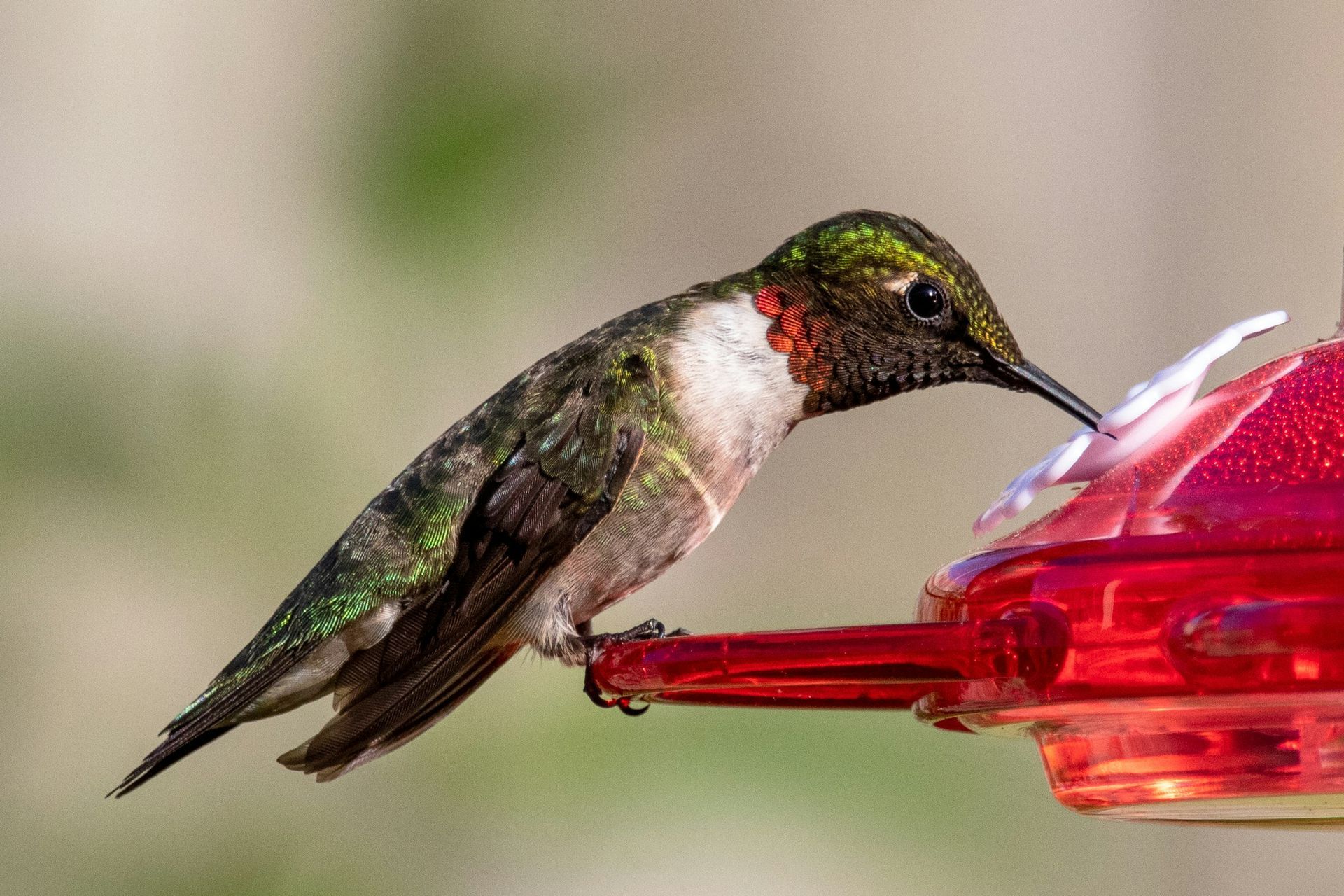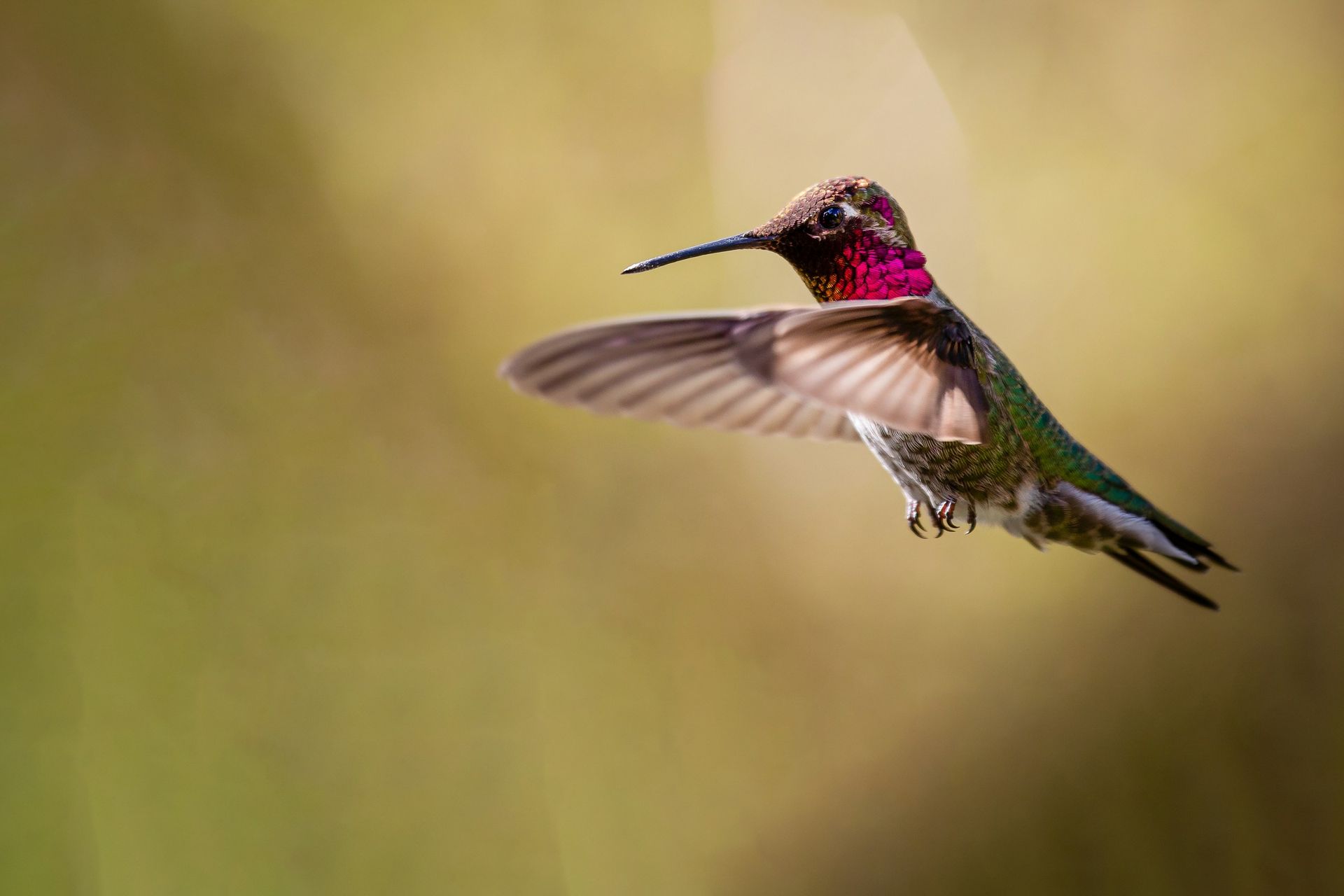Hummingbirds are small, fast-flying birds known for their iridescent feathers, rapid wingbeats, and ability to hover in place. Found only in the Americas, they inhabit diverse environments, from tropical rainforests to arid deserts and suburban gardens. Hummingbirds play a crucial role in pollination, transferring pollen as they feed on nectar from flowers.
These tiny birds typically measure between 3-5 inches in length and weigh less than an ounce. Their wings beat up to 80 times per second, allowing them to hover and fly in any direction, including backward. Common species in North America include Anna’s Hummingbird (Calypte anna) and Rufous Hummingbird (Selasphorus rufus).
Hummingbirds feed primarily on nectar but also consume small insects and spiders for protein. They are highly territorial and will aggressively defend their feeding areas from intruders. During the breeding season, females build cup-shaped nests using spider silk and plant fibers, where they lay 1-2 eggs. The chicks fledge after about three weeks.
Natural predators include praying mantises, snakes, and larger birds. Human-related threats such as habitat loss, window collisions, and pesticide use also impact hummingbird populations. Despite these challenges, many species have adapted to urban environments and are frequent visitors to backyard feeders.

For your safety and the well-being of wildlife, please observe animals from a distance and avoid touching or disturbing them. If you encounter an animal that appears injured or in distress, contact a licensed wildlife rescue organization for guidance before intervening.
Found An Animal? Not sure how to help a wild animal in need? Learn when to step in, who to call, and how to help safely.
Did You Know?
- Hummingbirds can fly up to 30 miles per hour and dive at speeds exceeding 60 miles per hour.
- They have the fastest metabolism of any bird, needing to eat up to twice their body weight in nectar and insects daily.
- Hummingbirds’ iridescent feathers appear to change color depending on the angle of the light.
- Some species, like the Rufous Hummingbird, migrate over 3,000 miles from Alaska to Mexico each year.
- Their hearts can beat over 1,200 times per minute during flight.
- Hummingbirds are the only birds that can fly backward.
- They remember individual flowers and feeders, revisiting them on a set schedule.
- In cold weather, hummingbirds can enter a state called torpor, lowering their body temperature to conserve energy.
- Unlike most birds, hummingbirds have no sense of smell but rely on their keen vision to locate flowers.
- Hummingbirds often build nests near Great Horned Owl nests. The presence of the owl nest scares off hummingbirds’ natural nest predators, like mockingbirds and scrub jays.
- It can take anywhere from 7-13 days for Allen’s hummingbirds to build their nest. The female will take a variety of materials (like spiderwebs, flowers, and grass) to intricately weave a nest that is only about 1.25 inches wide!
Problems Faced In The Wild
- Habitat Loss: Urban development reduces the availability of natural food sources and nesting sites.
- Pesticide Use: Chemicals reduce insect populations and can poison hummingbirds indirectly.
- Window Collisions: Reflective glass poses a significant danger to fast-flying hummingbirds.
- Climate Change: Altered flowering times and migration patterns impact food availability.
- Predation: Cats, larger birds, and praying mantises pose threats to hummingbirds.
- Human Disturbance: Overly crowded feeders and close human interactions can stress hummingbirds.
Tips For Cohabitation
- Plant Native Flowers: Provide a natural food source by planting nectar-rich native species.
- Maintain Clean Feeders: Clean hummingbird feeders regularly (every other day) to prevent the growth of harmful bacteria.
- Do not use red dye in Feeders: While hummingbirds are attracted to the color red, choose a feeder that has red caps, glass, or decorations. Red food coloring is not recommended, and simple sugar water is all that is needed.
- Install Window Decals: Reduce collisions by making glass more visible to birds.
- Provide Shelter: Create a safe space with shrubs and trees for nesting and protection.
- Educate the Community: Share the importance of hummingbirds in pollination and maintaining healthy ecosystems.



